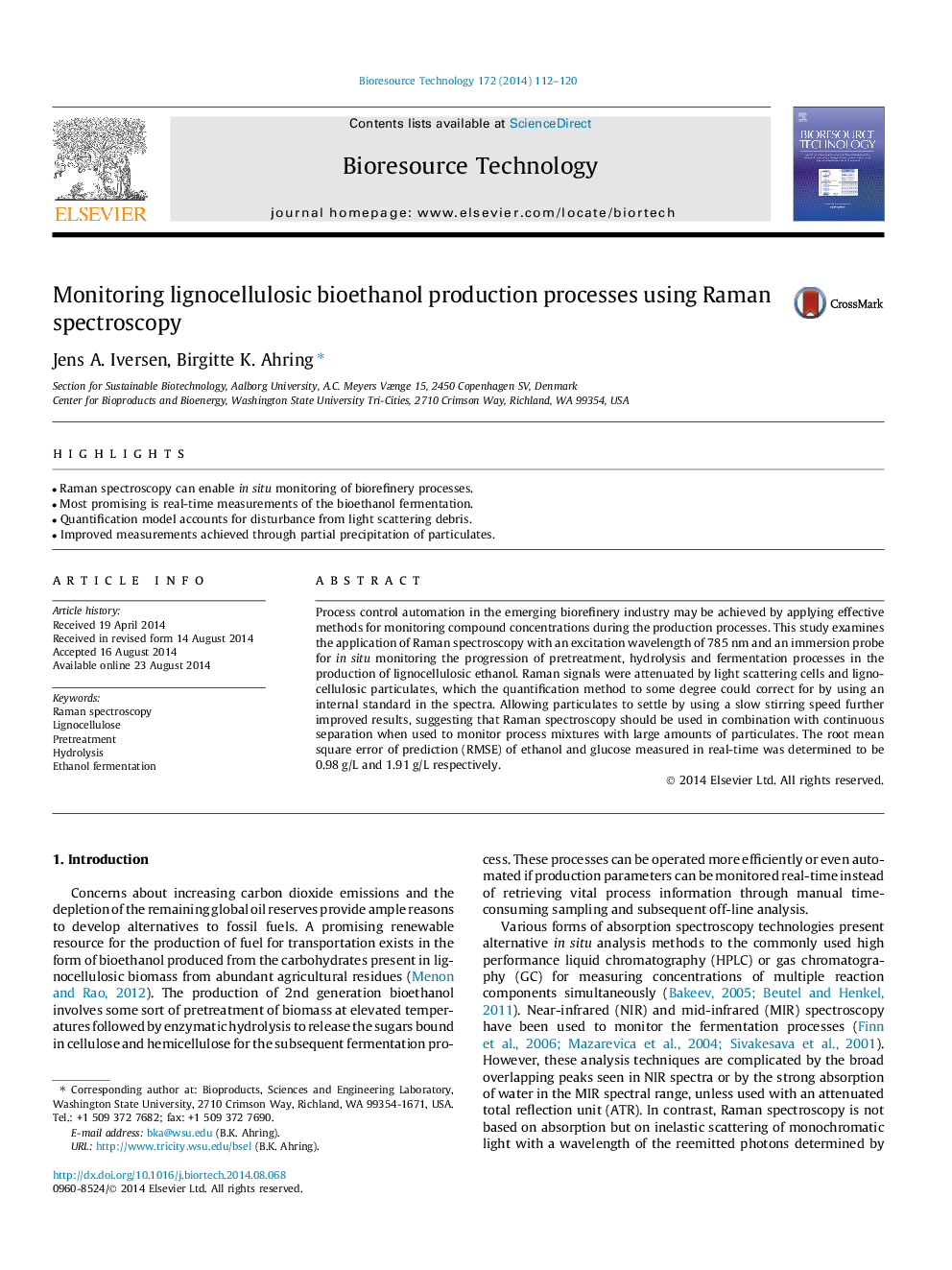| Article ID | Journal | Published Year | Pages | File Type |
|---|---|---|---|---|
| 680514 | Bioresource Technology | 2014 | 9 Pages |
•Raman spectroscopy can enable insitu monitoring of biorefinery processes.•Most promising is real-time measurements of the bioethanol fermentation.•Quantification model accounts for disturbance from light scattering debris.•Improved measurements achieved through partial precipitation of particulates.
Process control automation in the emerging biorefinery industry may be achieved by applying effective methods for monitoring compound concentrations during the production processes. This study examines the application of Raman spectroscopy with an excitation wavelength of 785 nm and an immersion probe for in situ monitoring the progression of pretreatment, hydrolysis and fermentation processes in the production of lignocellulosic ethanol. Raman signals were attenuated by light scattering cells and lignocellulosic particulates, which the quantification method to some degree could correct for by using an internal standard in the spectra. Allowing particulates to settle by using a slow stirring speed further improved results, suggesting that Raman spectroscopy should be used in combination with continuous separation when used to monitor process mixtures with large amounts of particulates. The root mean square error of prediction (RMSE) of ethanol and glucose measured in real-time was determined to be 0.98 g/L and 1.91 g/L respectively.
